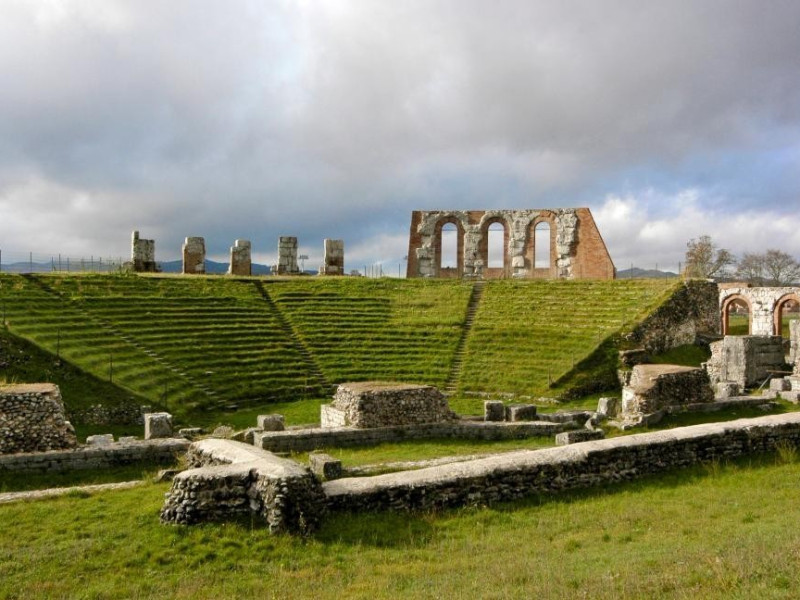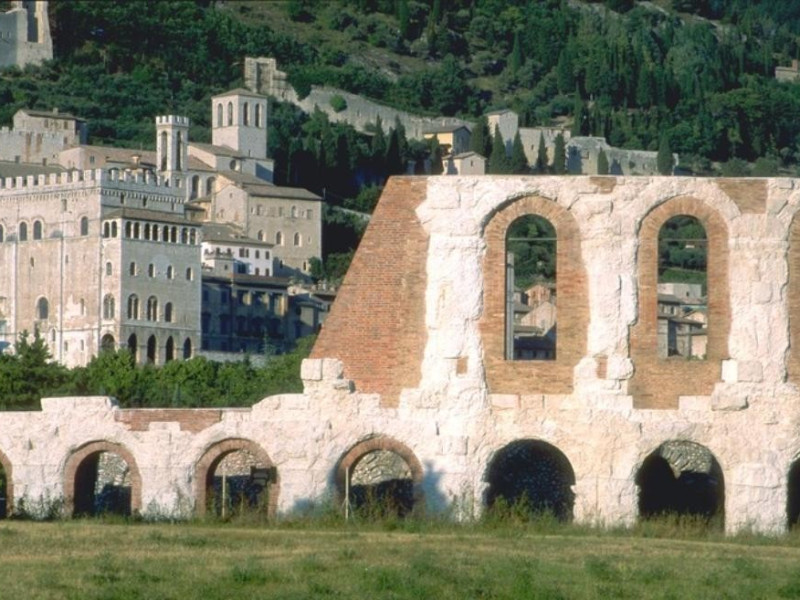Teatro Romano
The Roman Theater The ancient Roman Theater is in the municipality of Gubbio, in the archaeological area called Della Guastuglia; it corresponds to the vast late-republican district of the 2nd-1st century B.C., which extends over the flat country right outside the city entrance of Porta degli Ortacci and includes the area between Via Matteotti, Via Perugina, Via Ubaldi and Via Parruccini. The visit itinerary to the remnants of the Teatro Romano and the archaeological finds kept in the Antiquarium constitute a precious opportunity to learn about the social organization of the Roman town of Iguvium—Gubbio—from the recreational to the residential areas revealing the tastes, tradition and customs of the time. The Theater, accomplished with the contribution of the town’s magistrate Gneus Satrius Rufus around 20 B.C., was built with large rusticated blocks of limestone. It has two orders of arcades, of which the lower arcade and some arches of the upper arcade still remain standing. Remnants of some Opus Reticolatum—brickwork used in exterior walls typical of the ancient Roman architecture—are in the corridors and the vomitoires. The cavea is subdivided into four wedges and the strips without steps, probably, hosted wooden stairs. The floor of the orchestra, paved with slabs of limestone, allowed for the drainage of rainwater into a large cistern positioned underneath, called the pulpitum. The frons scaenaes has two lateral rectangular niches and a central semicircular niche. The theater’s edifice could hold up to six thousand spectators and was among the largest of the times.




